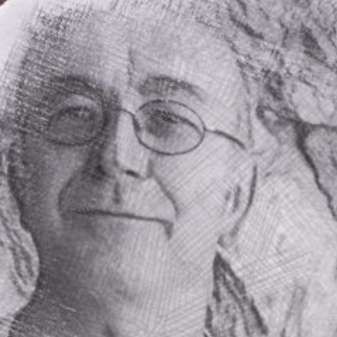In the relatively recent past, Russian pianist Nikolai Lugansky has featured impressively as an RSNO guest in concertos by two of his countrymen (Rachmaninov and Prokofiev). I was therefore very much looking forward to hearing him in the more intimate, less gladiatorial setting of an Edinburgh International Festival morning Queen’s Hall recital.
The opening item was indeed intimate: Janáček’s 1912 set of four pieces, V mlhách (“In the Mists”). Lugansky conveyed the uncertainties of the path ahead with gripping guile. The searching chromatic passages, particularly in the opening Andante, kept this first-time listener guessing. Janáček’s use of rests in both the following Molto adagio, and the closing Presto, really set me thinking. Rests can be used to oxygenate articulation, resulting in a spring in the step of the music. Here, however, their purpose was impediment. Yet the music’s halting feeling seemed somehow authoritative. In Lugansky’s hands this puzzling musical phenomenon felt completely natural. My favourite was the third movement, a tender Andantino which reminded me of the third of Kodály’s 1927 Dances of Marossék. This rendition captured the movement’s wistful, idyllic heart.
A composer with Schubert’s melodic gift can create the impression that the business of their creation and delivery is perfectly straightforward. Listening to Lugansky on disc, you’d be inclined to think the same. Observing the many techniques required in Schubert’s 1827 Four Impromptus, D.935 is a “game-changer”. The melody might, as in no. 1 in F minor (Allegro moderato), appear in the left hand, later crossing over the right’s shimmering accompaniment; or, as in the case of a haunting passage of no. 2 in A flat major (Allegretto), appear in the “lower part” of the right hand, sandwiched between accompaniment figures. In whichever case, the projection and phrasing of melodic material was simply disarming. This second Impromptu, which sounds somehow like the anthem of a modest country, was for me the time-stopping highlight of the first half, particularly the central section, whose lovely harmonies were beautifully shaped. No. 3 in B flat major (Andante), five variations on Schubert’s “Rosamunde” theme, mirrored the major/minor play of the opening Impromptu. Lugansky seemed particularly to enjoy the playful nature of the fifth variation, making light work of its technical demands. The closing Impromptu, no. 4 in F minor (Allegro scherzando), featured some humorous rhythmic wrong-footing in the form of notes grouped in twos in a triple-time setting. Any piano pupil currently suffering a “what’s the point?” crisis with scales in octaves would have experienced an energising epiphany in this movement. The crowd certainly enjoyed it and responded with very warm appreciation.
The Queen’s Hall Steinway briefly retuned, the concert resumed. If the difference in the halves could be summed up in a single word it would be “density”. The sometimes spare textures of the first half gave way to the much busier music of Rachmaninov, Liszt and Wagner.
Lugansky offered a set of five Études-Tableaux drawn from Rachmaninov’s Op. 33 (1911) and Op. 39 (1917) collections. Op. 33 no. 2 in C major featured more impressive hand-crossing, enabling a left hand, fresh from providing the bass note, to project a soaring melody above the right hand’s edgy accompaniment. The light textures of Op. 33 no. 4 in D minor are soon replaced by more robust, rustic dance figures. Dynamic contrast and phrasing were excellent here. Seeing the pieces listed on the programme one couldn’t help spotting that four out of five were minor. This simple observation might mislead, as Op. 39 no. 4 in B minor was energetic and sprightly, for which we had Lugansky’s wonderful articulation to thank. Op. 39 no. 5 in E flat minor had the rhapsodic nature one might more readily associate with Rachmaninov, while Op. 39 no. 6 which, according to the composer, portrays Little Red Riding Hood and her vulpine nemesis, projected something of the fun of silent movies.
Liszt featured in two pieces. His programmatic Les jeux d’eau à la Villa d’Este (1877) was here simply translucent. Lugansky’s sparingly used heavyweight power was given free rein in the climax of Isoldens Liebestod, Liszt’s arrangement of the final scene from his son-in-law Wagner’s Tristan und Isolde. Until that point, the piece’s sense of near-insoluble longing had been wonderfully paced.
Responding to tumultuous applause and cheering, Lugansky offered two encores. The first of Grieg’s Lyric Pieces Op. 12 was delivered with haunting simplicity. This excellent concert of astonishing technique in the service of music concluded with a joyous celebration of technical fireworks, Prelude no. 7 in C minor from Rachmaninov’s Op. 23 set.


